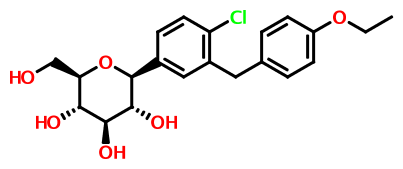The Long Tail and Chemistry - Why So Many ACS Meeting Talks are 'Uninteresting'
The Boston ACS provided yet another opportunity to look at chemistry as a social networking phenomenon. Having attended several talks inside my areas of expertise (organic chemistry, medicinal chemistry, and chemical informatics), I was struck by two things:
- Most talks were laser-focused on one tiny aspect of chemistry that is of little interest to the average chemist, but of great interest to a few chemists.
- Those talks that were not as focused on details drew the biggest crowds.
These statements have nothing to do with the quality of the presentations. In fact, one of the best talks focused on the clinical trial data for a single molecule, the Type II diabetes treatment dapagliflozin (below). Although the members of the audience for this talk seemed interested as well, they represented only a tiny fraction of the ACS attendees.

Roald Hoffman's talk (and the symposium of which it was a part) drew a larger audience. Having won a Nobel Prize surely can't hurt. An association with recent controversy is also a plus. Of course, being a good story teller and genuinely likable also helps. On the other hand, I wonder what the turnout would have been like if instead of telling his scientific life story Hoffman had presented the details of a recent theoretical study.
The Boston ACS, and just about any analysis of printed chemical research reveals The Long Tail at every turn. Although usually applied to mass markets such as DVD rentals through Netflix, The Long Tail also provides valuable insights into scientific fields such as chemistry.
To use Long Tail terminology, Roald Hoffman and E.J. Corey are at the head of the curve - the blockbusters. They and their work are widely-recognized and discussed. Almost everyone else's work, regardless of how ground-breaking or clever, lies in the long tail of relatively obscurity. It is of great interest to a handful of people but essentially invisible to most chemists.
In a few ACS sessions, I counted as few as four or five audience members. The large number of ACS divisions and the astonishingly small audiences at some of their presentations are nothing more than a concrete demonstration of the Long Tail at work.
Each ACS division is a microcosm of the ACS itself, complete with it's own curve containing a few blockbusters (who are essentially unknown outside of the division) and everyone else in the Long Tail.
Not surprisingly, the collection and distribution of chemical information reflects the Long Tail character of chemistry itself. This simple but powerful principle has rather important consequences for chemists of all stripes, be they information consumers or information producers.